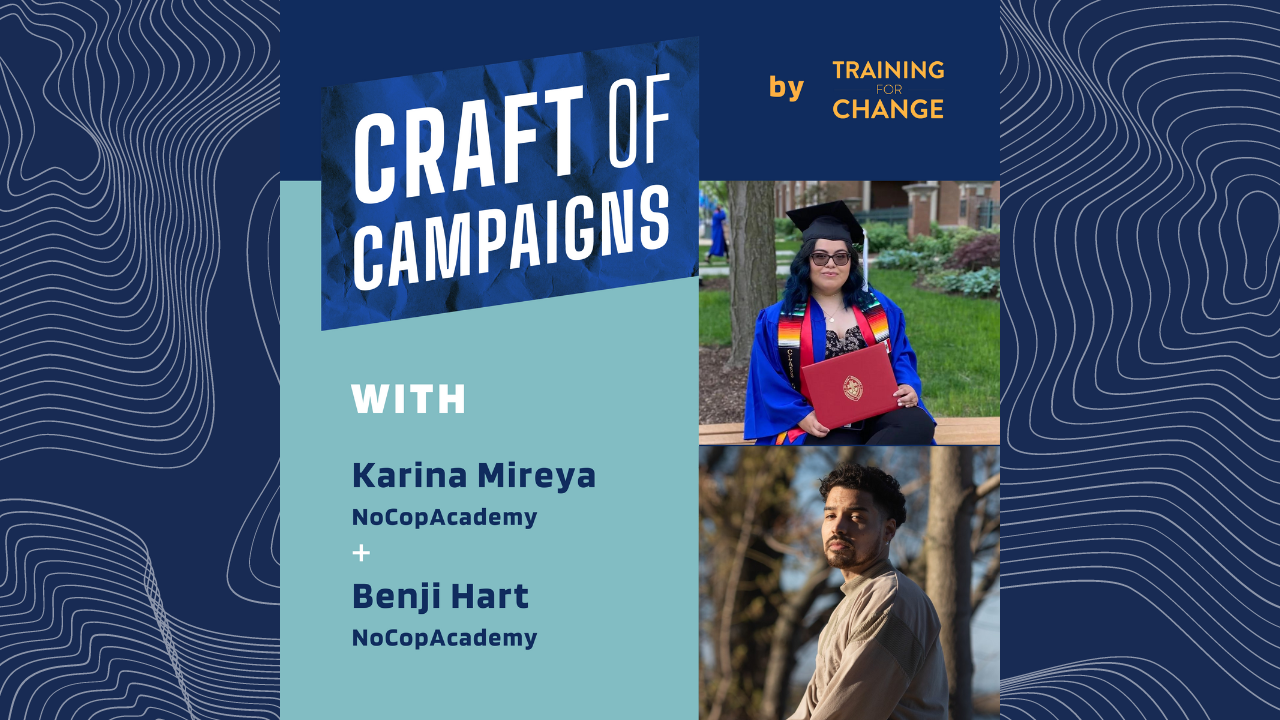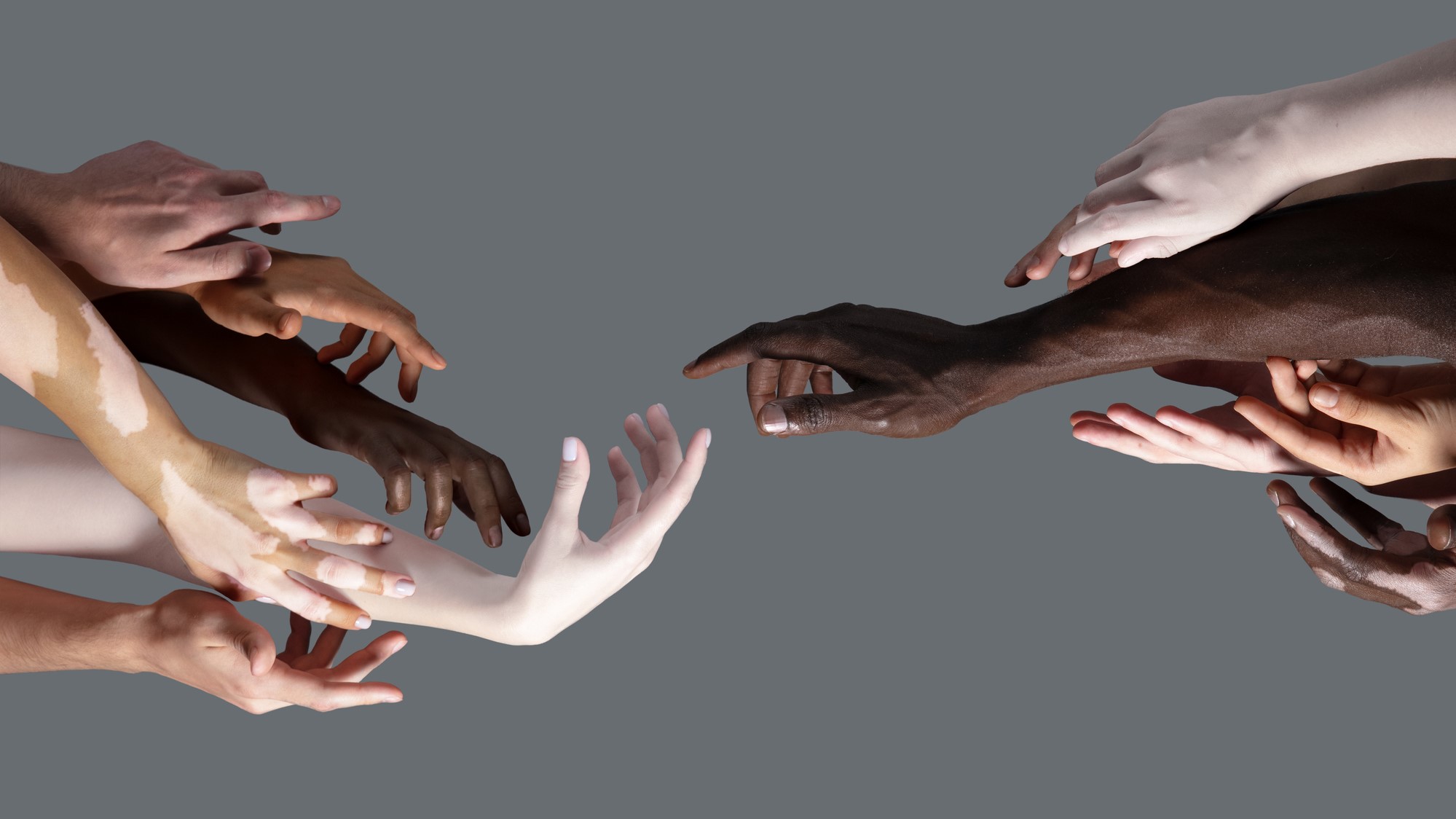This episode features a campaign from 2017 that you might have not heard about, but that shaped two major organizing stories in 2023: the stories were Stop Cop City and Mayor Brandon Johnson’s election, and the campaign was #NoCopAcademy.
Let’s start with Mayor Johnson. Many of us were captivated this year by the election of former Chicago Teachers Union organizer, Brandon Johnson, as mayor of the country’s third-largest city, whose first municipal budget includes historic investments in alternatives to policing. He’s arguably the most left-wing mayor of a large US city in decades. And he was elected by a basebuillding union that, alongside other aligned Chicago formations, has gradually weakened the city Democratic Party’s fearsome electoral machine, a firewall for the mayor and party bosses keeping left challengers in check. Breaking through this wall may not have happened without this campaign, #NoCopAcademy.
From the name, you can probably guess what it has in common with Stop Cop City. #NoCopAcademy was an 18-month campaign to stop a $95 million police training facility from being built on Chicago’s west side, pushed by former Mayor Rahm Emanuel. It had a lot of similarities with how Stop Cop City has unfolded: pitched as a “done deal” to turn public land into a police training facility, spending tens of millions of taxpayer dollars to further militarize already overpoliced neighborhoods, the city’s political establishment immediately lined up behind it. The groups involved worked to disrupt that narrative and to pull in as many organizations as possible against the proposal. Much of the grassroots energy was powered by youth organizers. They didn’t stop the facility from being built, but that may not have been the point.
In some ways, #NoCopAcademy is a bridge between eras of abolitionist organizing. As you’ll hear, one of the leading organizations, Assata’s Daughters, had previously campaigned against Mayor Rahm Emanuel and State’s Attorney Anita Alvarez’s attempts to help the police cover up the murder of a young man, Laquan MacDonald; a period you can hear more about in Season 1 of the podcast, on the campaign to end money bail in Chicago. Those campaigns seeded the movement ecosystem that took on Rahm’s training facility proposal, eventually eroding his political viability. And the tail end of the #NoCopAcademy arc strengthened movement alignment on abolitionist demands, at the same time as campaign momentum helped oust pro-police incumbent aldermen. Those new electeds who went on to support the historic Chicago Teachers Union strike later in 2019, and have continued to build out broad movement support that culminated in Mayor Johnson’s election.
So, that’s the long view. Now we’ll refocus on this two-year campaign arc. In the campaign’s first phase, in the fall of 2017, the #NoCopAcademy rapid response alliance that formed, led by youth organizers and adult advisors in groups like Assata’s Daughters and Black Lives Matter Chicago, alternated between disruptive protests to visibilize opposition, and educational tactics for new recruits. New activists like Karina, who we’ll hear from, were recruited by one of many youth organizations, who created meeting and action schedules for middle and high school students.
Karina found her way to the Brighton Park Neighborhood Council through art parties they hosted after school. Several artists’ groups, like For the People Artists Collective, which Benji Hart, who we’ll also hear from, contributed to, used artist pop-ups and performance art to grow and project public opposition to the academy. It’s impressive how many people were politicized and recruited into active support through community building activities.
Karina told us, “This campaign grounded me in what genuine community building looks like and has impacted not only every campaign but every space I've encountered since. It showed me the value of dreaming big, being unafraid of making radical demands, and what it looks like to build a community of people willing to do that with you. Since #NoCopAcademy, I was a part of Cops Out CPS and am a part of Treatment Not Trauma which both have built on the work of #NoCopAcademy demanding investment in life-affirming resources for all.”
In the next phase, in early 2018, organizers focused on developing both targeted and broad opposition to the mayor’s plan. They invited existing groups concerned with education, housing, or other neighborhood issues to consider the $95 million as a public resource that could be better spent on other needs. They eventually persuaded over 100 organizations to support the campaign’s demands, most of whom did not have an abolitionist ideological orientation before participating. That was intentional –– they could have simply focused on building with the other youth-focused, direct action-oriented abolitionist groups who were in more alignment, but they went wider. Asian activists recruited parents at the Lunar New Year Parade, others organized teach-ins at senior centers, and some recruited LGBTQ people to take action against a gay alderman actively promoting the academy. Broad support, check.
And organizers spent time canvassing the West Garfield Park neighborhood, where the facility was slated for a city-owned lot, eventually making waves with a report showing that most residents didn’t know about or support the mayor’s plan. They also zeroed in on a few city aldermen who supported the academy, and where existing basebuilding groups had power. Some of those people campaigned to unelect those aldermen in 2019. Targeted geographic support, check.
It wasn’t all protests and art pop-ups. Campaigners used traditional advocacy strategies too, mobilizing supporters to visit alderpersons at their offices and filing a lawsuit to obtain city planning documents. And as with Stop Cop City, solidarity actions played a role with Mayor Emanuel’s public appearances disrupted by #NoCopAcademy supporters in at least four different cities. In fact, at the height of the campaign he drew protests almost everywhere he went.
As with many rapid response mobilizations, the campaign’s goals only came into focus in hindsight. The mayor’s attempt to appropriate land and millions of taxpayer funding was a surprise, and the campaign unfolded as these often do, with organizers scrambling to break apart a Democratic party political machine consensus and galvanize urgent opposition but without a clear sense of whether they could stop the academy. Rather, the organizers’ objectives were more about recruitment, leadership development, and shifting more people and organizations towards an abolitionist orientation. Nine months in, they still hadn’t won over many elected officials –– a council committee voted 39 to 2 to approve a land sale for the academy. But less than a year after that, with primary elections looming, the campaign had persuaded six more aldermen to vote “no.” And more importantly, they had not only recruited dozens of new organizers into active participation, and dozens more organizations to take their first steps into an abolitionist orientation, they had also further eroded the mayor’s public support such that in the fall of 2018 he surprised almost everyone by announcing he wouldn’t run for reelection.
Eighteen months after the mayor first promoted the cop academy plan, the Chicago City Council approved the contract to build it by a vote of 38 to 8, in April 2019. But as the organizers we interviewed point out, it was a significant victory to have moved eight alderpeople to vote against. And four of those who voted for it were ousted by anti-academy primary candidates just a month later. As you’ll hear in our story, back in spring 2019, the organizers were divided over when or whether to put the campaign on ice. But much of the youth organizing energy unleashed during #NoCopAcademy then rolled into a new effort, Cops Out of Chicago Public Schools, which succeeded in cutting $21 million in funding for school policing.
The academy opened in January 2023, at a final cost of $170 million. And the mayor who enthusiastically participated in the academy’s ribbon-cutting ceremony, Lori Lightfoot, was herself ousted by voters four months later, during an election campaign in which Brandon Johnson was supported by several of the DSA members, now on the City Council, who first won their aldermanic elections in spring 2019. And, Mayor Johnson’s former employer, the Chicago Teachers Union, was one of the organizations eventually persuaded to support the #NoCopAcademy campaign’s demands.
I’m lifting up these throughlines across time because this campaign is in some ways emblematic of where basebuilders on the social movement left –– those recruiting and developing people standing on the sidelines –– have been since the fall of 2020. Many of our organizations absorbed new members and found our footing around campaigns responding to the moment created by the George Floyd uprising, the pandemic, and a widespread desire to defeat Trump at the ballot box. But in the new organizing conditions we helped to create, in the years that followed, facing a sense of less overall urgency and an ascendant pro-policing wing of the Democratic Party, many have struggled with a fallow period for movement building in general and issue-based campaigning in particular. But sometimes effective campaigns, even the ones that fall short of their demands, are most notable for the way they bridge toward the next phase of struggle, helping us develop our skills and build organization. It may be that some of us will look back at this time as a bridge, or a valley that allowed us to eventually peek over a new horizon, into an unfamiliar organizing terrain, or catch sight of the new world we were starting to manifest.





